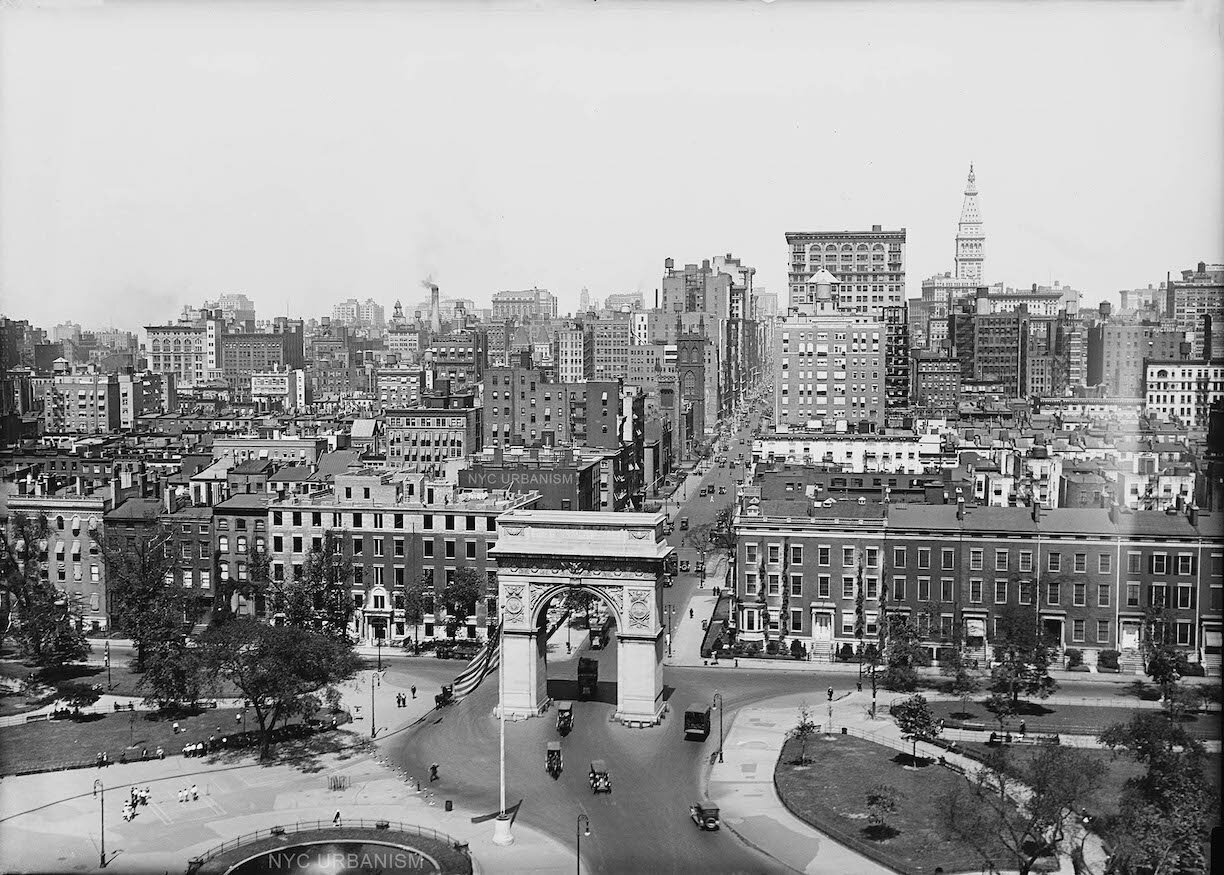Washington Square Park - A History of Activism
Washington Square Park bus loop, 1960s.
Washington Square Park has a long history of being a place of free speech and activism. In 1834 city stonecutters caused a riot, protesting the use of prison labor to construct NYU's campus. During the Draft Riots, troops were brought into NYC from Gettysburg to keep the peace, camping out in Washington Square. By the early 20th century, the area was becoming a cultural center for artists, writers, and young activists. Following the Triangle Shirtwaist fire, 20,000 workers – a quarter female – paraded through the arches rallying for better working conditions.⠀⠀⠀⠀⠀⠀⠀⠀⠀
After World War II, folksingers began congregating and performing in the park, soon becoming the center of Greenwich Village's bohemian society. Tensions with the older working-class residents led the city to require permits for performances in 1947, resulting in public protests. The park was the center of civic activism following a proposed redesign by Parks Commissioner Robert Moses, who wanted to run a highway through the park. In the late fifties, notable individuals such as Jane Jacobs, Eleanor Roosevelt, Margaret Mead, and Lewis Mumford, formed The Joint Emergency Committee to Close Washington Square Park to Traffic, protesting a plan by Robert Moses to build a highway through the park. In 1959 traffic was finally rerouted from entering the park. This victory in defeating the most powerful force in the city was a turning point after other neighborhoods had fought and lost to Robert Moses.
In 1961 the Parks Department refused to issue permits for folk singers, sparking a riot which resulted in several hundred musicians and supporters gathering in the park. NYPD Riot Squad descended on the crowd, attacking civilians with billy clubs and arresting ten people. The events became known as the Beatnik Riot with newspaper headlines reading "3,000 Beatniks Riot in Village." Today it is impossible to visit the park without experiencing live music.
Today the park is still the symbol of activism and progressive politics, with frequent protests and demonstrations.




